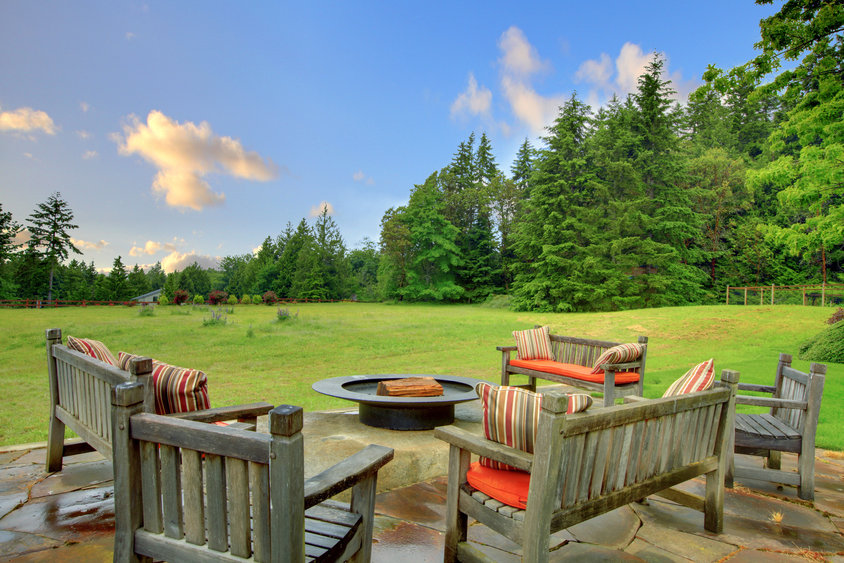As The Doors’ front man Jim Morrison once said, “Come on baby, light my fire.” The cool springtime evenings are the perfect time to light the backyard fire pit. For those who enjoy relaxing with friends around a warm fire, and even roasting marshmallows, a fire pit could be a great addition to your backyard. There are a few things to consider before making your decision, however, ranging from personal preference to the important items of safety precautions.
-
Location, Location, Location
This real estate adage is just as true when deciding whether a fire pit is a good addition to your yard. You must identify how much space you have to work with so that you can position your pit far enough away from your home or other combustible materials. The rule of thumb is to always have your fire pit at least 10 – 20 feet away from your home, or trees and shrubbery, so that no stray spark lands on any combustible surface. Always have a container of water or a hose at the ready should anything start getting out of control.
-
DIY or BIY
The next decision after identifying the location for your fire pit is what type you wish to have. Are you going to Do-It-Yourself, or are you going to Buy-It-Yourself? This is truly a personal preference, but depending on how extravagant you want your pit to look, you could get away with building one for far less money than buying one.
-
Safety First
Now that you have decided where you want the pit to go, and how you want it to look, it comes time to enjoy it. A backyard fire is meant to be quaint and small, not a raging bonfire. Keep the fire under control. Only use one or two logs at a time. Don’t start piling up pallets in order to get the flames roaring. If you purchase a fire pit try to get one that has a spark arresting screen with it.
Whatever you do, NEVER use gasoline to start your backyard fire pit. This is extremely dangerous, and should never be necessary! One final tip, before lighting the fire, consult your local fire department to see if there are any rules and regulations that need to be followed.


